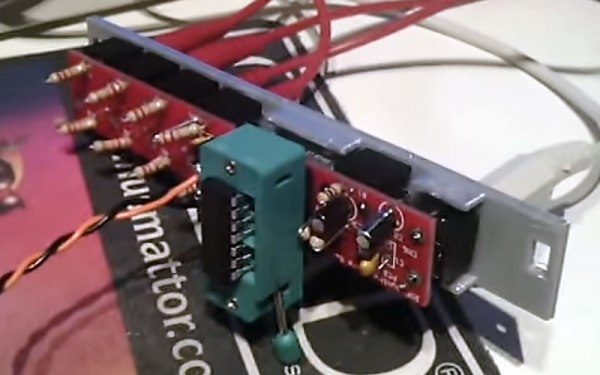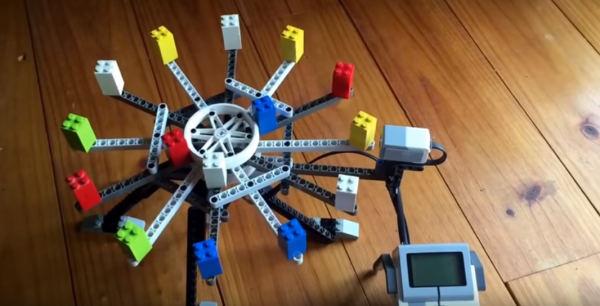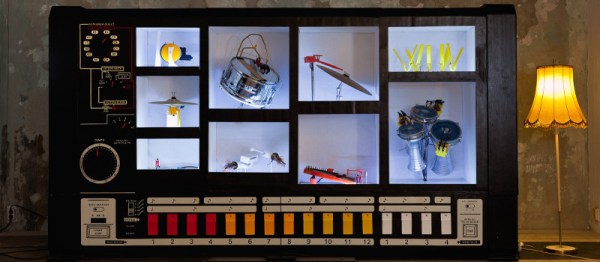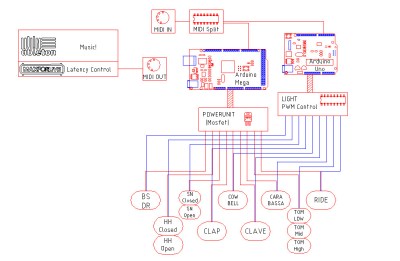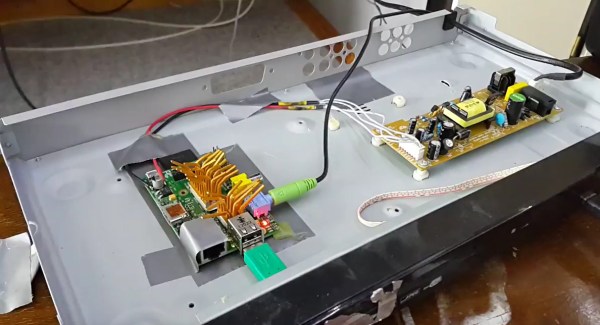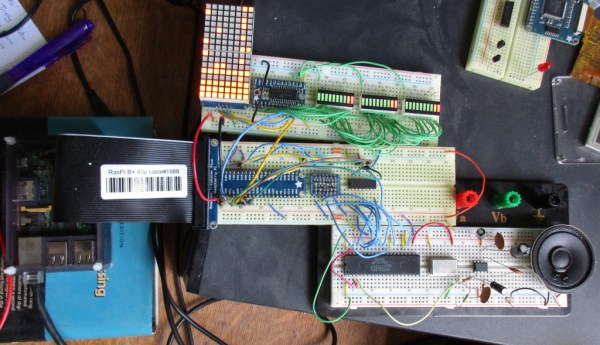You may not know the 808 drum machine, but you have definitely heard it: the original Roland TR-808 was the first programmable drum machine and has been a mainstay of electronic music ever since. Hackers have been building their own versions of this vintage device for years, but this version from do-it-yourself synth builder [Jan Ostman] is quite remarkable.
He’s packed the entire device (called the Drum8 Vintage) into a single ATtiny84 14-pin DIP package, including the samples and eight polyphonic voices, plus old-school analog CV triggers, a global tune and an analog global accent input. That won’t mean a lot to non-musicians, but suffice to say that these are the same inputs that the original TR-808 had that allowed you to do all sorts of interesting stuff to trigger and modify the drum sounds. Plus some extras.
[Jan] is offering the chip itself for $20, and has made a limited edition version that is built into a patch bay panel for that genuine hard-wired look for $99. If you want to go the home-made route and make your own, he’s released the source code and schematics for making your own. You can check out more of [Jan’s] work in this post on making your own open-source instruments from Elliot. Thanks, Jan!

